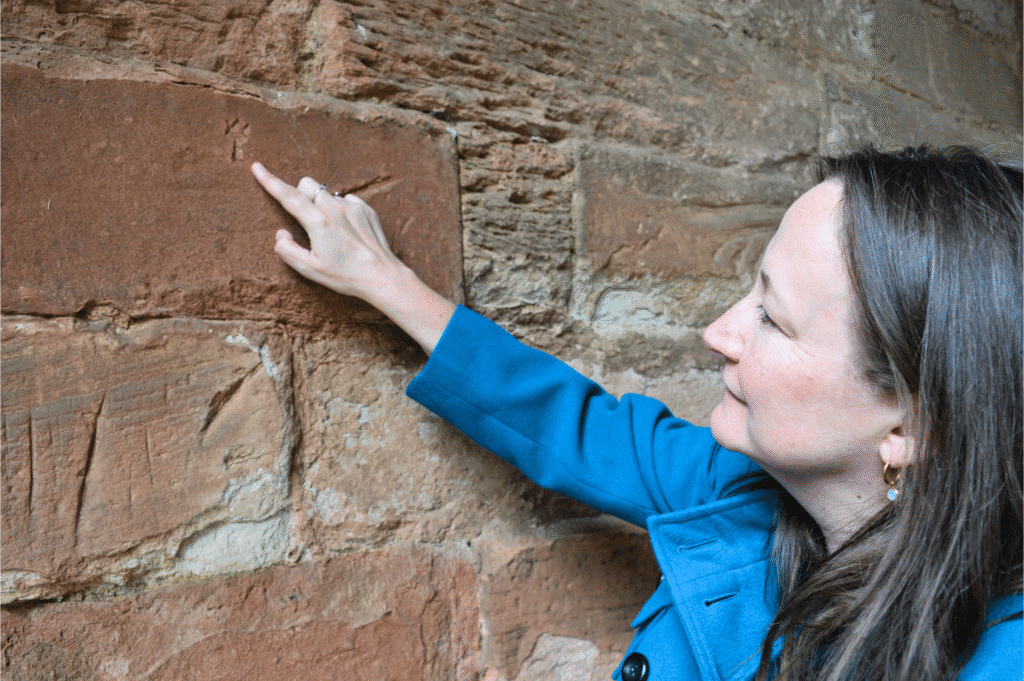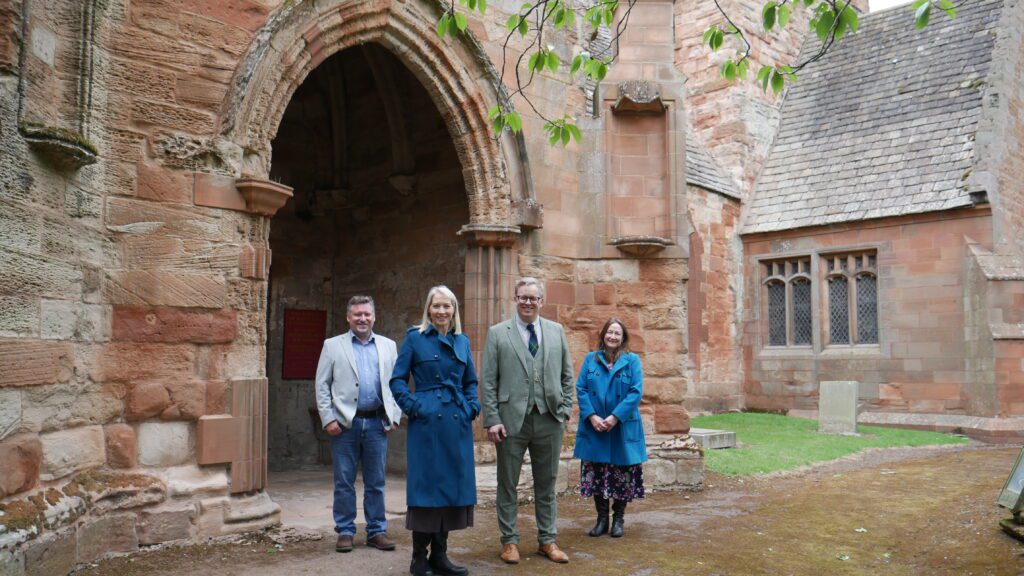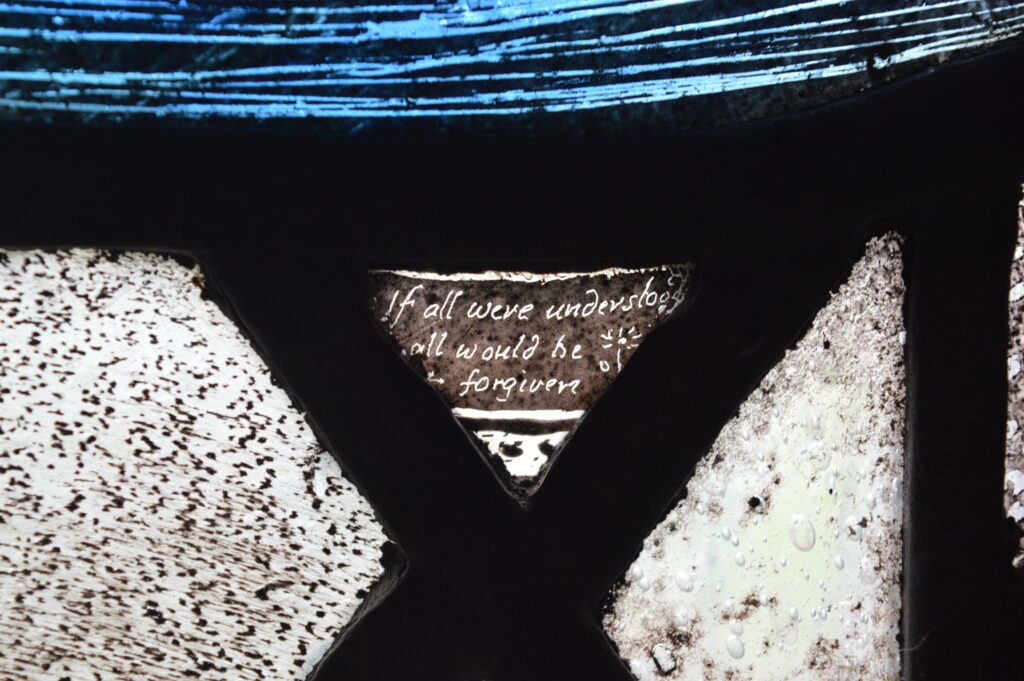News | Posted July 2, 2025
Urgent Challenge for the Heritage Sector to be Addressed Thanks to National Lottery Heritage Fund Grant
The Society of Antiquaries of Scotland and Scotland’s Churches Trust have announced a £229,015 grant from The National Lottery Heritage Fund to help ensure a sustainable future for Scotland’s churches and their contents.

Probable stonemason’s mark at St Mary’s Parish Church, Whitekirk. According to Scotland’s Churches Trust, there has been a church on this site since at least the 12th century. It became an important place of pilgrimage, and the current building was constructed during the 15th century. After a fire in 1914, the church was restored by noted Scottish architect Robert Lorimer (Image credit: Society of Antiquaries of Scotland)
The Finding Futures for Scotland’s Churches project will immediately begin to collate information on the heritage and community value of the nation’s churches to help explore practical solutions to avoid the loss of heritage when churches are closed, share resources and prioritise sites for further action.
Scotland’s church buildings and their contents represent a wealth of cultural heritage built-up over generations. There are almost 3,000 such buildings across the country, belonging to a range of different denominations, and encompassing a variety of building types and periods of construction, from the early medieval period to the more recent past.
Around one third of the country’s places of worship are predicted to shut by the end of this decade. With nearly 200 of these heritage buildings already closed since 2020, the problem is an immediate one, and one that constitutes a national challenge for the heritage sector as many of these churches hold tangible and intangible cultural heritage significance.
In addition to their religious and ceremonial use, they also possess tangible architectural, historical, archival, genealogical, archaeological and artistic legacies. These can be of local, regional, national, and international importance and may be sold, lost or damaged depending on the fate of the building.

Left to right: Dr Simon Gilmour FSAScot (Director of the Society of Antiquaries of Scotland), Caroline Clark (The National Lottery Heritage Fund Director for Scotland), Dr DJ Johnston-Smith (Director of Scotland’s Churches Trust) and Dr Helen Spencer FSAScot (Head of Research at the Society of Antiquaries of Scotland) St Mary’s Parish Church, Whitekirk (Image credit: Finding Futures for Scotland’s Churches)
The National Lottery Heritage Fund also brings to the project its own strong record of delivering new futures for Scotland’s historic church buildings, and the heritage within.
With support from The National Lottery Heritage Fund, Govan Old church in Glasgow, for example, has been transformed into an internationally significant heritage attraction over the years as the home of the Govan Stones. These Viking-age monuments are said to be one of the best collections of early medieval sculpture anywhere in the British Isles.
In the Cairngorms National Park, The National Lottery Heritage Fund is also supporting the community in partnership with Historic Churches Scotland to develop a new role for St Margaret’s Church in Braemar as a cultural hub and performance venue through a grant awarded in 2024. St Margaret’s is considered the finest Scottish work of celebrated ecclesiastical architect Sir John Ninian Comper.
However, with several hundred churches already on the market, the challenge to understand their significance and address their loss is national.

Viking-age monuments in Govan Old church in Glasgow (Image credit: Peter Devlin)
As well as collating information, Finding Futures for Scotland’s Churches will fill knowledge gaps using heritage surveys, with opportunities for local communities to get involved. This information will be made publicly accessible, for example, through a dedicated microsite with a regularly updated database and blog.
The two-year project will draw together people and organisations as part of an action group to explore practical solutions, share resources and prioritise sites for further action. It will also develop a plan to ensure heritage of local and national importance is not lost when churches are re-used or re-purposed.
Dr Helen Spencer FSAScot, Head of Research at the Society of Antiquaries of Scotland, said:
“Thanks to National Lottery players, the Society will be able to work with communities across the country to bring together crucial information about the heritage of Scotland’s churches.
“Working with Scotland’s Churches Trust and the many other groups involved in caring for these places of worship, we hope to make the heritage sector much better prepared when churches are closed or re-purposed, to ensure that important treasures are not lost to the nation forever.”
Dr DJ Johnston-Smith, Director of Scotland’s Churches Trust, said:
“For hundreds of years, communities across Scotland deposited a trove of culturally significant heritage in their local churches all across the country. This collective cultural inheritance needs to be documented before it vanishes from public sight, possibly forever.
“We look forward to working with the Society of Antiquaries of Scotland, The National Lottery Heritage Fund and colleagues to continue the roll out of our Rapid Church Recording methodology and our ongoing collaborative work with the local congregations and communities who are currently writing the next chapters in the stories of these precious historic buildings.”
Caroline Clark, The National Lottery Heritage Fund Director for Scotland, said:
“For centuries, churches have been cultural and physical landmarks at the heart of Scottish community life. A meeting place, a repository of lives and histories and a physical link to the intangible heritage of generations.
“We recognise the significant challenges now facing those churches. This project will take a strategic lead in ensuring there is accurate recording of the heritage of individual churches. That will provide an invaluable wealth of data to support informed decisions on the future use of our churches as organisations and communities seek to give them new life while respecting their heritage.”

Miniscule inscription on stained glass at St Mary’s Parish Church, Whitekirk reading “If all were understood, all would be forgiven”. According to Scotland’s Churches Trust, the window was produced by Karl Parsons after the building was engulfed in flames in 1914. The fire was blamed on Suffragettes, after a suffrage-supporting note was found nearby, and the message is believed to be a veiled reference to the Suffragette fire, though this has yet to be proven (Image credit: Society of Antiquaries of Scotland)
Finding Futures for Scotland’s Churches is funded under The National Lottery Heritage Fund’s #PlacesOfWorship initiative, launched in 2024 to help places of worship across the UK tackle heritage challenges systemically, become more sustainable and welcome people from all backgrounds, including those who rarely visit.
To find out more about Finding Futures for Scotland’s Churches, visit the Society’s webpage on the project.

